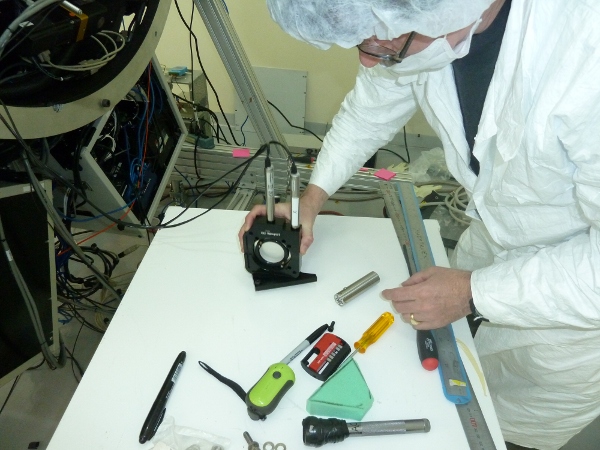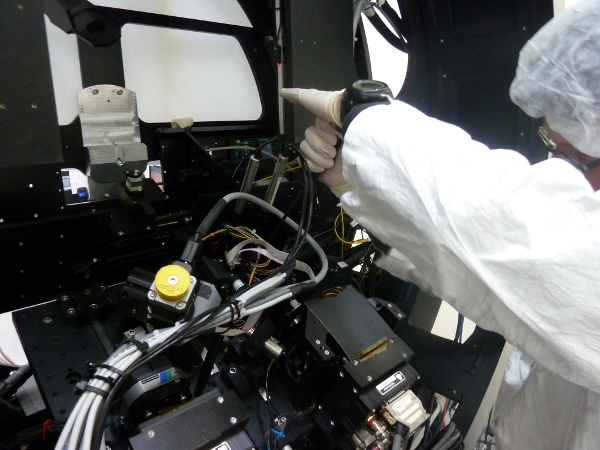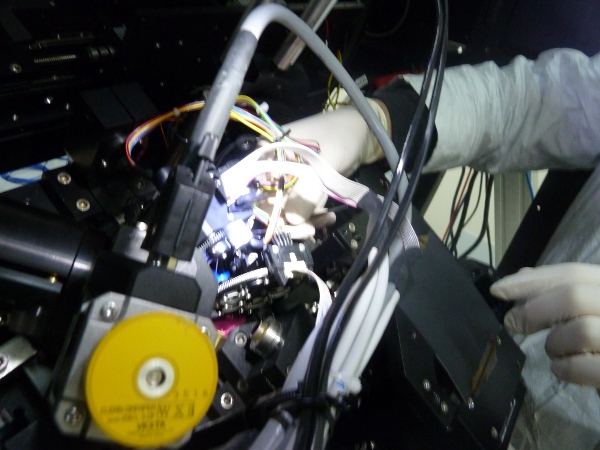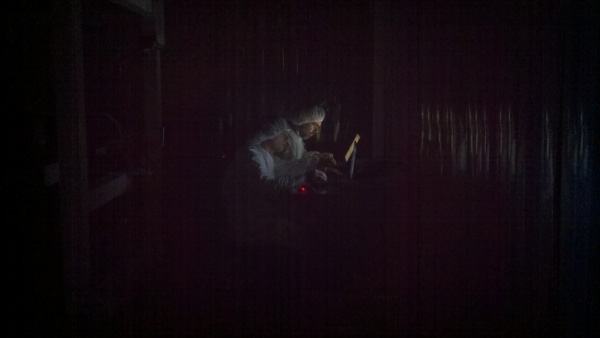Tip for users of pyramid wavefront sensors: you are not very sensitive to focus with a large modulation amplitude. For MagAO in particular, you have to get amplitude down to ~.1 milliradians before you really have any z-stage resolution.
Tip for users of the VisAO camera: there is a huge factor (it appears to be about eight) between z-stage motion and VisAO focus stage motion. So failure to heed the above PWFS tip will cause you to tear your camera apart several times in one day trying to find why your focus position shifted. You will feel very dumb later.
So that’s the story of Laird and Jared’s day. Because we forgot these two things, we were completely and totally baffled by the results we were getting when running focus tests on our camera. Since we replaced our gimbal mirror (the motorized mirror that lets us steer stars around our detector) we naturally assumed that was the problem. We even made up a bunch of reasons why it could be and proceeded to apply made up solutions. But in the end, we just hadn’t been careful enough with focusing on the pyramid, and so our numbers were meaningless and our time wasted. The good news, I guess, is that we earned a bunch of intuition for how our stuff works. When life gives you lemons . . .


This story started last night, when we figured out how to tighten the beam splitter wheel – making it much more repeatable. This changed the angle of our beam slightly, causing us to adjust our gimbal angle a little.

See Katie’s post here for a demo on why we’re so obsessed with our gimbal and beamsplitter. Those two devices need to be reliable and repeatable for us to efficiently acquire the stars we use to measure turbulence. They also need to be as free of vibrations as possible for VisAO science operations.
All this visible light focusing meant working with the lights off in the lab. That didn’t stop the ASM testing.

